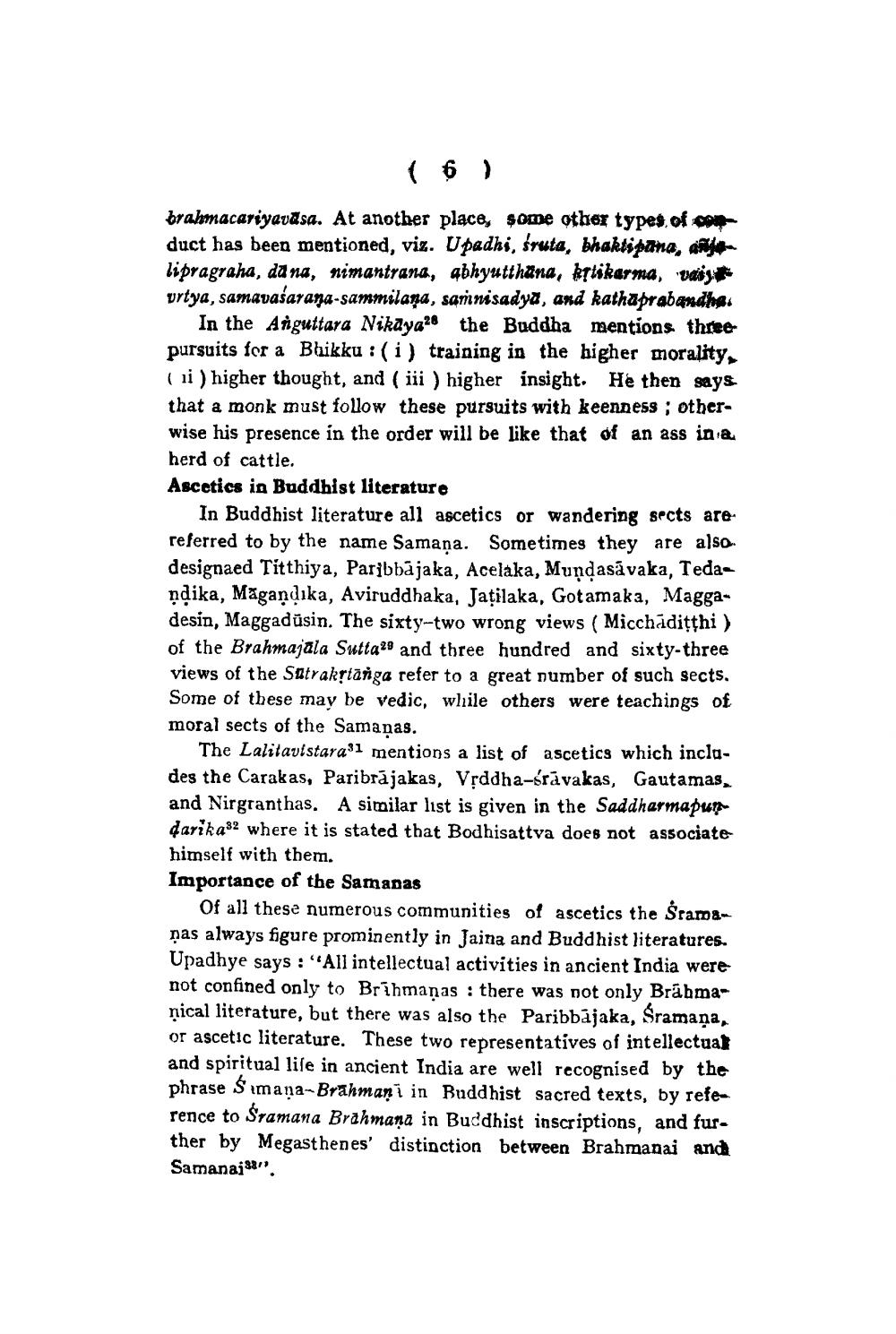________________
brahmacariyavasa. At another place, some other types of con duct has been mentioned, viz. Upadhi, śruta, bhakti pana, ante lipragraha, dana, nimantrana, abhyutthana, kştikarma, vasy vrtya, samavasarana-sammilaga, samnisadya, and kathaprabandha.
In the Anguttara Nikaya28 the Buddha mentions three pursuits for a Bhikku :(i) training in the higher morality ( i ) higher thought, and (iii) higher insight. He then says that a monk must follow these pursuits with keenness; otherwise his presence in the order will be like that of an ass in a herd of cattle. Ascetics in Buddhist literature
In Buddhist literature all ascetics or wandering sects are referred to by the name Samana. Sometimes they are also designaed Titthiya, Paribbājaka, Acelaka, Mundasāvaka, Tedandika, Magandika, Aviruddhaka, Jatilaka, Gotamaka, Maggadesin, Maggadūsin. The sixty-two wrong views ( Micchadithi ) of the Brahmajala Sutta2! and three hundred and sixty-three views of the Satrakstänga refer to a great number of such sects. Some of these may be vedic, while others were teachings of moral sects of the Samaņas.
The Lalitavistara1 mentions a list of ascetics which inclades the Carakas, Paribrájakas, Vrddha-srāvakas, Gautamas, and Nirgranthas. A similar list is given in the Saddharmapurin darikas? where it is stated that Bodhisattva does not associate himself with them. Importance of the Samanas
Of all these numerous communities of ascetics the Sram&ņas always figure prominently in Jaina and Buddhist literatures. Upadhye says: 'All intellectual activities in ancient India were not confined only to Brihmanas : there was not only Brahmaņical literature, but there was also the Paribbajaka, Sramaņa, or ascetic literature. These two representatives of intellectual and spiritual life in ancient India are well recognised by the phrase Simaņa-Brahmani in Buddhist sacred texts, by reference to Sramana Brahmana in Buddhist inscriptions, and further by Megasthenes' distinction between Brahmanai and Samanais.




